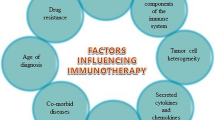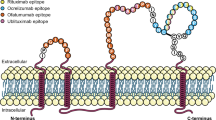Summary
Cladribine is a new purine nucleoside analogue with promising activity in low-grade lymphoproliferative disorders, childhood acute myelogenous leukaemia and multiple sclerosis. Reversed phase high performance liquid chromatography and radioimmunoassay have been used for the analysis of the plasma pharmacokinetics of cladribine. The major (inactive) metabolite in plasma, chloroadenine, can only be detected by liquid chromatography.
The oral bioavailability of cladribine is 37 to 51%, and that of subcutaneous administration is 100%. The terminal half-life varies from 5.7 to 19.7 hours and the apparent volume of distribution from 54 to 357 L/m2. The concentration in the cerebrospinal fluid is 25% of that in plasma in patients without central nervous system disease; in patients with meningeal disease, the cladribine concentration in the cerebrospinal fluid exceeds that in plasma.
Cladribine is a prodrug and needs intracellular phosphorylation to active nucelotides. The intracellular concentration of these metabolites is several hundred-fold higher than that of cladribine in plasma and they are retained in leukaemia cells with half-lives between 9 and >30 hours depending on diagnosis and sampling schedule. There is no correlation between the plasma concentration of cladribine and that of the intracellular metabolites.
The renal clearance of cladribine is 51% of total clearance and 21 to 35% of an intravenously administered dose is excreted unchanged in the urine. Pretreatment with cladribine increases the intracellular accumulation of the active metabolite of cytarabine, cytosine arabinoside 5′-triphosphate, by 36 to 40%.
Similar content being viewed by others
References
Christensen LF, Broom AD, Robins MJ, et al. Synthesis and biochemical activity selected 2,6-disubstituted-(2-deoxy-α- and β-D-erythro-pentofuranosyl)purines. J Med Chem 1972; 15: 735–9
Giblett ER, Anderson JE, Cohen F, et al. Adenosine-deaminase deficiency in two patients with severe impaired cellular immunity. Lancet 1972; II(786): 1067–8
Seto S, Carrera CJ, Kubota M, et al. Mechanism of deoxy-adenosine and 2-chlorodeoxyadenosine toxicity to non-dividing hunam lymphocytes. J Clin Invest 1985; 75: 377–83
Kazimierczuk Z, Vilpo J, Seela F. Base-modified nucleosides related to 2-chloro-2′-deoxyadenosine. Helv Chim Acta 1992; 75: 2289–97
Beutler E. Cladribine. Lancet 1992; 340: 952–6
Carson DA, Wasson DB, Beutler E. Antileukemic and immunosuppressive activity of 2-chloro-2′-deoxyadenosine. Proc Natl Acad Sci USA 1984; 2232–6
Carson DA, Wasson DB, Kaye J, et al. Deoxycytidine kinasemediated toxicity of deoxyadenosine analogs towards malignant human lymphoblasts in vitro and towards murine L1210 leukemia in vivo. Proc Natl Acad Sci USA 1980; 77: 6865–9
Bryson H, Sorkin E. Cladribine: a review of its pharmacodynamics, pharmacokinetics and therapeutic potential in the treatment of haematological malignancies. Drugs 1993; 46: 872–94
Santana V, Mirro J, Cherrie H, et al. Phase I clinical trial of 2-chlorodeoxyadenosine in pediatric patients with acute leukemia. J Clin Oncol 1991; 9: 416–22
Juliusson G, Heldal D, Hippe E, et al. Subcutaneous injection of 2-chlorodeoxyadenosine for symptomatic hairy cell leukemia. J Clin Oncol 1995; 13: 989–95
Piro LD, Elison DJ, Saven A. The Scripps clinic experience with 2-chlorodeoxyadenosine in the treatment of hairy cell leukemia. Leuk Lymphoma 1994; 14 Suppl. 1: 121–5
Juliusson G, Christiansen I, Mørk-Hansen M, et al. Oral cladribine as primary therapy for patients with B-cell chronic lymphocytic leukemia. J Clin Oncol 1996; 14: 2160–6
Juliusson G, Liliemark J. Long-term survival following cladribine (2-chlorodeoxyadenosine) therapy in previously treated patients with chronic lymphocytic leukemia. Ann Oncol 1996; 7: 373–9
Saven A, Carrera CJ, Carson D, et al. Chlorodeoxyadenosine treatment of refractory chronic lymphocytic leukemia. Leuk Lymph 1991; 5 Suppl.: 133–8
Saven A, Emanuele S, Kasty M, et al. 2-chlorodeoxyadenosine activity in patients with untreated, indolent non-Hodgkin’s lymphoma. Blood 1995; 86: 1710–6
Kay A, Saven A, Carrera C, et al. 2-Chlorodeoxyadenosine treatment of low-grade lymphomas. J Clin Oncol 1992; 10: 371–7
Liliemark J, Hagberg H, Cavallin-Ståhl E, et al. Cladribine (2-CdA) for early low grade non-Hodgkin’s lymphoma (LG-NHL) [abstract]. Blood 1994; 84 Suppl.: 168
Liliemark J, Porwit A, Juliusson G. Intermittent infusion of cladribine in previously treated patioents with low-grade non-Hodgkin’s lymphoma. Leuk Lymphoma. In press
Fidias P, Chabner BA, Grossbard ML. Purine analogs for the treatment of low-grade lymphoproliferative disorders. The Oncologist 1996; 1: 125–39
Santana V, Mirro J, Kearns C, et al. 2-Chlorodeoxyadenosine produces a high rate of complete hematologic remissions in relapsed acute myeloid leukemia. J Clin Oncol 1992; 10: 364–70
Eibschutz B, Baird SM, Weisman MH, et al. Oral 2-chlorodeoxyadenosine in psoriatic arthritis: a preliminary report. Arthritis Rheum 1995 Nov; 38: 1604–9
Beutler E, Sipe JC, Romine JS, et al. The treatment of chronic progressive multiple sclerosis with cladribine. Proc Natl Acad Sci USA 1996: 93: 1716–20
Sipe JC, Romine JS, Koziol JA, et al. Cladribine in treatment of chronic prgressive multiple sclerosis. Lancet 1994; 334: 9–13
Oberhuber G, Schmid T, Thaler W, et al. 2-Chlorodeoxyadenosine in combination with cyclosporine prevents rejection after allogeneic small bowel transplantation. Transplantation 1994; 58: 743–5
Albertioni F, Hassan M, Liliemark J. Kinetics of 2-chloro-2′-deoxyadenosine and 2-chloro-2′-arabino-fluoro-2′-deoxyadenosine in isolated perfused rat liver. Eur J Drug Metab Pharmacokinet 1995; 30: 225–32
Liliemark J, Pettersson B, Juliusson G. Determination of 2-chloro-2′-deoxyadenosine in human plasma. Biomed Chromatogr 1991; 5: 262–4
Beutler E, Piro LD, Saven A, et al. 2-Chlorodeoxyadenosine (2-CdA): A potent chemotherapeutic and immunosuppressive nucleoside. Leuk Lymphoma 1991; 5: 1–8
Drug master file for 2-chloro-2′’-deoxyadenosine. Warsaw: Foundation for the Development of Diagnostics and Therapy Warsaw, 1992
Albertioni F, Juliusson G, Liliemark J. On the bioavailability of 2-chloro-2′-deoxyadenosine (CdA): the influence of food and omeprazole. Eur J Clin Pharmacol 1993: 44: 579–82
Liliemark J, Albertioni F, Hassan M, et al. On the bioavailability of oral and subcutaneous 2-chloro-2′-deoxyadenosine in humans; alternative routes of administration. J Clin Oncol 1992; 10: 1514–8
Liliemark J, Juliusson G. Cellular pharmacokinetics of 2-chloro-2′-deoxyadenosine nucleotides: comparison of intermittent and continuous intravenous infusion and subcutaneous and oral administration in leukemia patients. Clin Cancer Res 1995; 1: 385–90
Saven A, Cheung WK, Smith I, et al. Pharmacokinetic study of oral and bolus intravenous 2-chlorodeoxyadenosine in patients with malignancy. J Clin Oncol 1996; 14: 978–83
Liliemark J, Pettersson B, Engberg B, et al. On the paradoxically concentration dependent metabolism of 6-mercaptopurine by leukemic cells. Cancer Res 1990; 50: 108–12
Plunkett W, Liliemark JO, Adams TM, et al. Saturation of 1-β-D-arabinofuranosylcytosine 5′-triphosphate accumulation in leukemia cells during high-dose 1-β-D-arabinofuranosylcytosine therapy. Cancer Res 1987; 47: 3005–11
Eriksson S, Kierdaszuk B, Munch-Petersen B, et al. Comparison of the substrate specificities of human thymidine kinase 1 and 2 and deoxycytidine kinase towards antiviral and cytostatic nucleoside analogs. Biochem Biophys Res Commun 1991; 176: 586–92
Juliusson G, Johnson SAN, Christiansen J, et al. Oral 2-chlorodeoxyadenosine (CdA) as primary treatment for symptomatic chronic lymphocytic leukemia (CLL) [abstract]. Blood 1993; 10 Suppl. 1: 141
Karlsson K, Strömberg M, Johnson SAN, et al. Three-day three-weekly oral cladribine (2-CdA) for chronic lymphocytic leukemia. A preliminary report from a European phase II multicenter study. Ann Oncol 1996; 7 Suppl. 3: 68
Kato Y, Matsushita T, Uchida H, et al. Rectal bioavailability of 6-mercaptopurine in children with acute lymphoblastic leukemia: avoidance of ‘first pass’ metabolism. Eur J Clin Pharmacol 1992; 42: 619–22
Liliemark J, Albertioni F, Edlund C, et al. Bioavailability and bacterial degradation of rectally administered 2-chloro-2′-deoxyadenosine. J Pharm Biomed Anal 1995; 13: 661–5
Freireich E, Gehan E, Rall D, et al. Quantitative comparison of toxicity of anticancer agents in mouse, rat, hamster, dog, monkey, and man. Cancer Chemother Rep 1966; 50: 219–44
Liliemark J, Juliusson G. On the pharmacokinetics of 2-chloro-2′-deoxyadenosine in humans. Cancer Res 1991; 51: 5570–2
Marks RS, Richardson RL, Reid JM, et al. A Phase I and pharmacologic study of 2-chlorodeoxyadenosine in patients with advanced solid tumors [abstract]. Proc Am Soc Clin Oncol 1994: 13: 416
Liliemark J, Juliusson G. On the pharmacokinetics of 2-chloro-2′-deoxyadenosine (CdA) in cerebrospinal fluid (CSF) [abstract]. Blood 1992; 80 Suppl. 1: 471
Kearns CM, Blakley RL, Santana VM, et al. Pharmacokinetics of cladribine (2-chlorodeoxyadenosine) in children with acute leukemia. Cancer Res 1994; 54: 1235–9
Marks RS, Richardson RL, Reid JM, et al. A phase I and pharmacologic study of 2-chlorodeoxyadenosine in patients with advanced solid tumors [abstract]. Proc Am Soc Clin Oncol 1994; 13: 416
Saven A, Kawasaki H, Carrera CJ, et al. 2-Chlorodeoxyadenosine dose escalation in nonhematological malignancies. J Clin Oncol 1993; 11: 671–8
Richards AI. Response to meningeal Waldenström’s macroglobulinemia to 2-chlorodeoxyadenosine. J Clin Oncol 1995; 13: 2476
Santana VM, Hurwitz CA, Blakley RL, et al. Complete hematologic remissions induced by 2-chlorodeoxyadenosine in children with newly diagnosed acute myeloid leukemia. Blood 1994; 84: 1237–42
Wang L, Karlsson A, Arnér ES, et al. Substrate specificity of mitochondrial 2′-deoxyguanosine kinase. Efficient phosphorylation of 2-chlorodeoxyadenosine. J Biol Chem 1993; 268: 22847–52
Carson DA, Wasson DB, Teatle R, et al. Specific toxicity of 2-chlorodeoxyadenosine towards resting and proliferating human lymphocytes. Blood 1983; 62: 737–43
Carson DA, Kaye J, Wasson DB. The potential importance of soloble deoxynucleotidase activity in mediating deoxyadenosine toxicity in human lymphoblasts. J Immunol 1981; 126: 348–52
Kawasaki H, Carrera CJ, Piro LD, et al. Relationship of deoxycytidine kinase and cytoplasmic 5′-nucleotidase to the chemotherapeutic efficacy of 2-chlorodeoxyadenosine. Blood 1993; 81: 597–601
Maerevoet M, Delannoy A, Ferrant A, et al. 2-Chlorodeoxy-adenosine (CDA) therapy in chronic lymphocytic leukemia (CLL) and Waldenström’s macroglobuliemia (WD): an update on 77 patients [abstract]. Blood 1995; 86 Suppl. 1: 838
Mulligan SP, Eliadis P, Dale B, et al. 2-Chlorodeoxyadenosine (2-CDA) in previously untreated chronic lymphocytic leukemia (CLL) — preliminary analysis from the Australian leukemia study group trial [abstract]. Blood 1995; 86 Suppl. 1: 349
von Rohr A, Bacchi M, Fey MF, et al. 2-Chlorodeoxyadenosine (CDA) by subcutaneous bolus injection: A phase II study in hairy cell leukemia (HCL) [abstract]. Blood 1995; 86 Suppl. 1: 350
Albertioni F, Lindemalm S, Reichelovà V, et al. Intracellular pharmacokinetics of cladribine 5’-mono- (CdAMP) and triphosphate (CdATP) following oral cladribine (CdA) in patients with chronic lymphocytic leukemia. Proc Am Soc Clin Oncol 1996; 15: 178
Liliemark J, Arnér E, Juliusson G. On the relationship between cladribine (CdA) plasma concentrations, intracellular CdA-nucleotide (CdAN) concentration, deoxycytidine kinase (dCK) and anti-leukemic response in patients with chronic lymphocytic leukemia. Proc Am Soc Clin Oncol 1994; 12: 308
Petzer AL, Bilgeri R, Zilian U, et al. Inhibitory effect of 2-chlorodeoxyadenosine on granulocytic, erythroid, and T-lymphocytic colony growth. Blood 1991; 78: 2583–7
Avery TL, Regh JE, Lumm WC, et al. Biochemical pharmacology of 2-chlorodeoxyadenosine in malignant human hematopoi-etic cell lines and therapeutic effect of 2-bromodeoxy-adenosine in drug combinations in mice. Cancer Res 1989; 49: 4972–8
Arnér E, Spasokoutskaja T, Juliusson G, et al. Phosphorylation of 2-chlorodeoxyadenosine (CdA) in extracts of peripheral blood mononuclear cells of leukemic patients. Br J Haematol 1994; 87: 715–8
Albertioni F, Pettersson B, Reichelovà V, et al. Analysis of 2-chloro-2′-deoxyadenosine in human blood samples and urine by high-performance liquid chromatography using solidphase extraction. Ther Drug Monit 1995; 16: 413–8
Gandhi V, Estey E, Keating MJ, et al. Chlorodeoxyadenosine and arabinocylcytosie in patients with acute myelogenous leukemia: pharmacokinetic, pharmacodynamic, and molecular interactions. Blood 1996; 87: 256–64
Juliusson G, Liliemark J. 2-Chlorodeoxyadenosine (CdA) with and without cytosine arabinoside (ara-C) and idarubicin for acute myeloid and lymphoid leukemia: clinical and pharmacokinetic studies. Br J Haematol 1994; 87 Suppl. 1: 12
Goldsmith MA, Slavik M, Carter SK. Quantitative prediction of drug toxicity in small and large animals. Cancer Res 1975; 35: 1354–64
Collins J, Grieshaber C, Chabner B. Pharmacologically guided phase I clinical trials based upon preclinical drug development. J Natl Cancer Inst 1990; 82: 1321
Reichelovà V, Juliusson G, Spasokoukotskaja T, et al. Interspecies differences in the kinetic properties of deoxycytidine kinase elucidate the poor utility of a phase I pharmacokinetically directed dose-escalation concept for 2-chloro-2′-deoxy-adenosine. Cancer Chemother Pharmacol 1995; 36: 524–9
Fridborg H, Nygren P, Larsson R. Relationship between pharmacokinetic parameters in patients and cytotoxicity in vitro of standard and investigational anticancer drugs. Anticancer Drugs 1995; 6: 64–9
Author information
Authors and Affiliations
Rights and permissions
About this article
Cite this article
Liliemark, J. The Clinical Pharmacokinetics of Cladribine. Clin-Pharmacokinet 32, 120–131 (1997). https://doi.org/10.2165/00003088-199732020-00003
Published:
Issue Date:
DOI: https://doi.org/10.2165/00003088-199732020-00003




